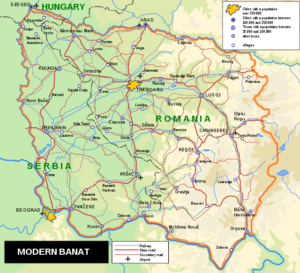Boksánbánya, Boksa / Kövesd Castle

It is not easy to decide whether this castle belonged to Transylvania or the Ottoman Occupied Lands of Hungary but finally, I thought it would be more fitting here. Boksánbánya (Bocşa, Deutsch-Bogschan, Neuwerk) is the place where you can find Boksa or Bokcsa Castle aka Kövesd Castle. It used to belong to Krassó County of the Hungarian Kingdom, but now it is in Romania. This area was called the Bánság or Bánát in the Hungarian language. It is an area next to Transylvania and had been frequently targeted by attackers from the south.

The Bánát is a geographical and historical region that is currently divided among three countries: the eastern part lies in western Romania (the modern counties of Timiș, Caraș-Severin, Arad south of the Körös/Criș river, and the western part of Mehedinți); the western part in northeastern Serbia (mostly included in Vojvodina / Vajdaság, except a part included in the Belgrade Region); and a small northern part lies within southeastern Hungary (Csongrád county).

The area is also called “Donauschwaben / Banater Schwaben”. A lot of southern Germans and Alemannic French were to be settled in the late 17th century into the Carpathian Basin because that area was left almost with no humans after the Turkish wars.
Next to the Banat was an area known as “Swabian Turkey / Schwäbische Türkei” in the southern part of nowadays Hungary, there were a lot of “Swabians” settled, too. The funny fact is that they were mostly no Swabians, but Franks, Bavarians, from Lorraine, and Alsatians. It is said, that they were named Swabians because of their registration and boarding in Ulm.
Presently, the region of Bánát is populated by ethnic Romanians, Serbs, Hungarians, Germans, Krashovani, Ukrainians, Slovaks, Bulgarians, Czechs, Croats, Jews, Romani, and other ethnicities. There is a term they sometimes use, it is the „Banatian”. This region has suffered much during the Ottoman wars. Boksa Castle is located in the Eastern part of the region, in the Bánság (or Dukedom) of Szörény, in the hills, on the left bank of the Berzava River.

The castle might have been defending the important iron mines and trade in the area. Kövesd (Boksa) Castle used to be supervised by the Comes of Krassó County as it belonged to the Hungarian king. It was first mentioned in 1367 and it used to be the property of Palatine Garai Miklós during the reign of the Hungarian King Zsigmond of Luxembourg. Then, a nobleman called Zsidói (Csáki) Miklós owned it in 1394 for a short time but he exchanged it for the Castle of Adorján in Bihar County a year later.

The Macedonian family received the castle as a gift in 1407. The settlement belonging to the castle was an agricultural town by this time, with a monastery of the Franciscans. After the Macedonian family, the castle appeared as part of some Wallachian noble families. The Turks captured the castle in 1552 due to the fall of Temesvár (Timisoara) Castle. The Hajdú soldiers took it back in 1563 but the Turks managed to retake it soon.

Bán (Duke) Borbély György of Lugos besieged Kövesd Castle on 8 July 1595 and took it but he sold it to a rich nobleman called Fodor Ferenc of Karánsebes in exchange for 3,000 gold Forints. When the Serbs killed Fodor Ferenc in 1604, his widow inherited the castle but the Turks could get hold of the fort by betrayal. Yet, it was retaken and Prince Rákóczi Zsigmond of Transylvania gifted it to his man, Trombitás István of Lugos.

Abruptly, the castle exchanged hands again and the Turks became its lords. Then, it was Bán (Duke) Barcsay Ákos of Karánsebes who took the fort in 1658. He decided to blow it up the next year because he must have been unable to keep it and did not want to cede it to the Turks. They may have been clumsy about its destruction because the castle had been rebuilt and reinforced and it was bothering the comfort feeling of the Turks. It was Pasha Arnót who took it in 1695 and he had the castle pulled down so profusely that it has never been worth rebuilding after this.
Now, you can see the remains of its walls and the 3-meter-thick foundation of its tower. There had been a smaller tower and a dry moat, too. There were 19,152 inhabitants there in 1992, mainly Romanians (16,253) but there were 1011 Germans, 800 Gypsies, and 791 Hungarians as well.

Dear Readers, I can only make this content available through small donations or by selling my books or T-shirts:
Please, feel free to support me with a coffee here:
You can check out my books on Amazon or Draft2Digital, they are available in hardcover, paperback, or ebook:
https://www.amazon.com/dp/198020490X or at https://books2read.com/b/boYd81

My work can also be followed and supported on Patreon: Become a Patron!http://Become a Patron!

[wpedon id=”9140″]

https://hungarianottomanwars.myspreadshop.com/all


